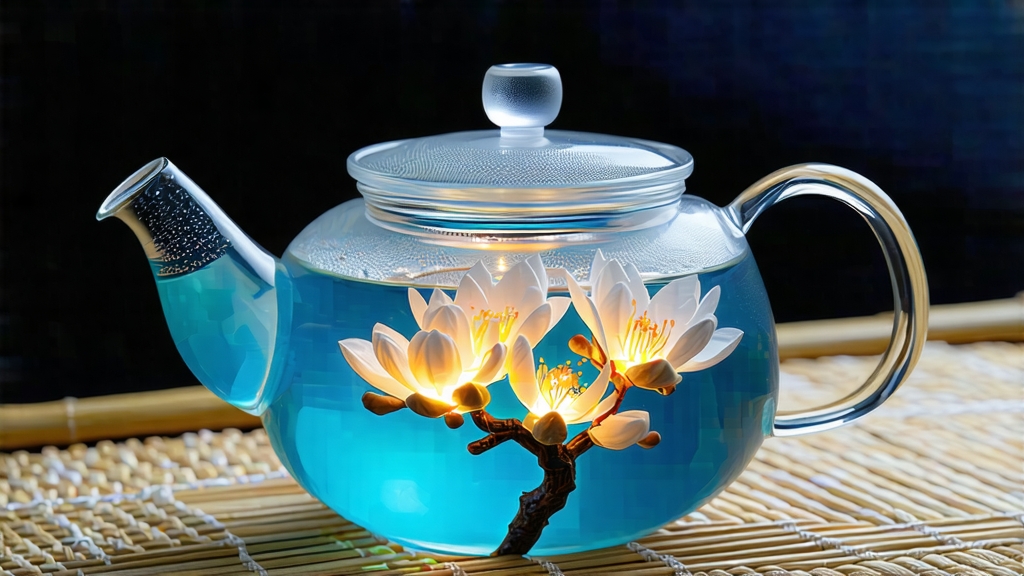
White tea is the quietest chapter in the long epic of Chinese tea, and within that chapter the brightest line is White Hair Silver Needle—Bai Hao Yin Zhen in Mandarin. To the uninitiated it looks almost too delicate to be tea: slim, silvery spears that seem better suited to a fairy-tale quiver than to a teapot. Yet each needle carries fifteen centuries of Fujian mountain mist, monsoon wind, and the stubborn refusal of farmers to bend nature to speed. Understanding Silver Needle is therefore less about learning a beverage than about entering a slow conversation between climate, leaf, and time.
Historical whispers
The first verifiable record appears in the Song dynasty treatise “Da Guan Cha Lun” (1107 CE), where Emperor Huizong singles out “white buds from the northern ridges” as the only tea pure enough for the imperial palate. Those buds were almost certainly the ancestor of today’s Silver Needle, plucked from the now-famous Fuding Da Bai cultivar. During the late Qing, European traders stationed in Fuzhou began shipping the tea to London and Saint Petersburg under the poetic label “Flowery Pekoe,” a corruption of the Hokkien phrase “pek-ho,” white hair. Because the buds arrived intact and unoxidized, they retained their downy appearance, causing Victorian ladies to believe the tea was “washed in moonlight,” a romantic myth that still adorns tins in Paris and Melbourne.
Micro-terroir: two counties, one needle
Authentic Silver Needle is now geographically protected to two micro-regions: Fuding and Zhenghe, both on the northern flank of Fujian’s Wuyi Mountains. Fuding sits closer to the East China Sea; its sandy, slightly saline soils and cooling maritime breezes produce needles that are plumper, silver-white, and famous for a lilac-honey aroma. Zhenghe, higher and more continental, gives slimmer, steel-grey needles with a cooler, mineral finish reminiscent of wet slate. Purists will cup them side-by-side the way Burgundy lovers compare Chambolle-Musigny and Gevrey-Chambertin.
The cultivar behind the charisma
All true Silver Needle springs from two related tea trees—Fuding Da Bai and Zhenghe Da Bai—literally “Big White” tea trees. Their buds can reach 3.5 cm in early spring, nearly twice the length of ordinary tea cultivars, and are sheathed in a dense layer of protective trichomes that reflect light like frost. These hairs are not mere ornament; they are storage lockers for amino acids, especially L-theanine, which translates into the tea’s signature umami-sweet broth.
Craft: the art of doing almost nothing
Making Silver Needle is less manufacture than babysitting. Picking begins at dawn on the first clear day after the qingming festival, when overnight temperatures have kissed the buds but not yet woken the insects. Only the unopened spear—no leaf, no stem—is snapped off with a thumbnail, a skill that takes a novice two seasons to master without bruising the tip.
The buds are then laid, never piled deeper than 3 cm, on bamboo trays stacked like ventilated skyscrapers inside sun-warmed sheds. For 36 to 48 hours they wither under natural airflow, dehydrating from 75 % moisture to about 10 %. During this languid interval enzymes nibble gently at polyphenols, producing tiny quantities of floral volatiles—linalool, geraniol, phenylacetaldehyde—yet oxidation is halted long before it ever reaches the reddish spectrum familiar to black-tea drinkers. No pan-firing, no rolling, no baking above 40 °C; the leaf is coaxed rather than cooked. Finally the needles are “baked” over charcoal embers screened by thin parchment, a 20-minute ritual that fixes the aroma without caramelizing sugars. The entire cycle is governed by humidity sensors, but the final call is still made by a master who pinches a bud, listens to the crackle, and consults the mountain wind the way a sailor tastes spray.
Grades and market reality
Chinese export standards recognize three grades: Special, First, and Second. Special Grade must be 100 % bud, uniformly 2.5–3 cm, with at least 90 % silver coverage. First Grade allows 5 % open leaf, and Second Grade up to 15 %. In practice the West rarely sees true Special Grade;